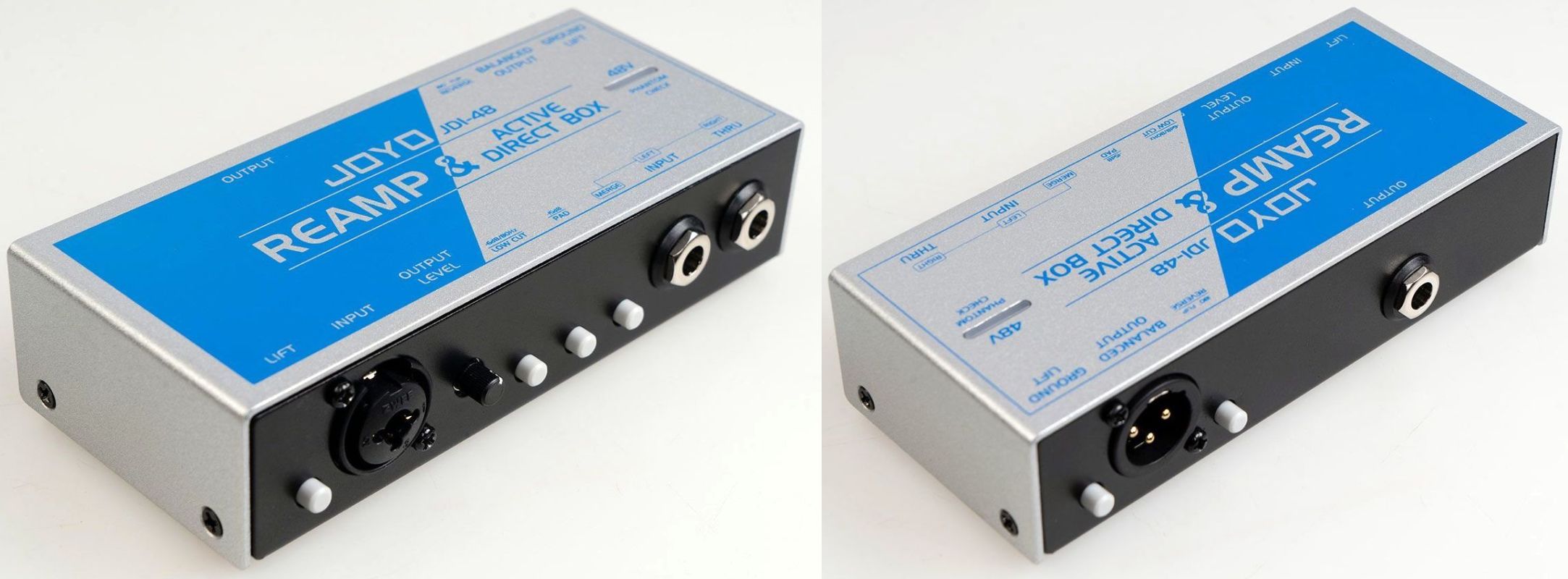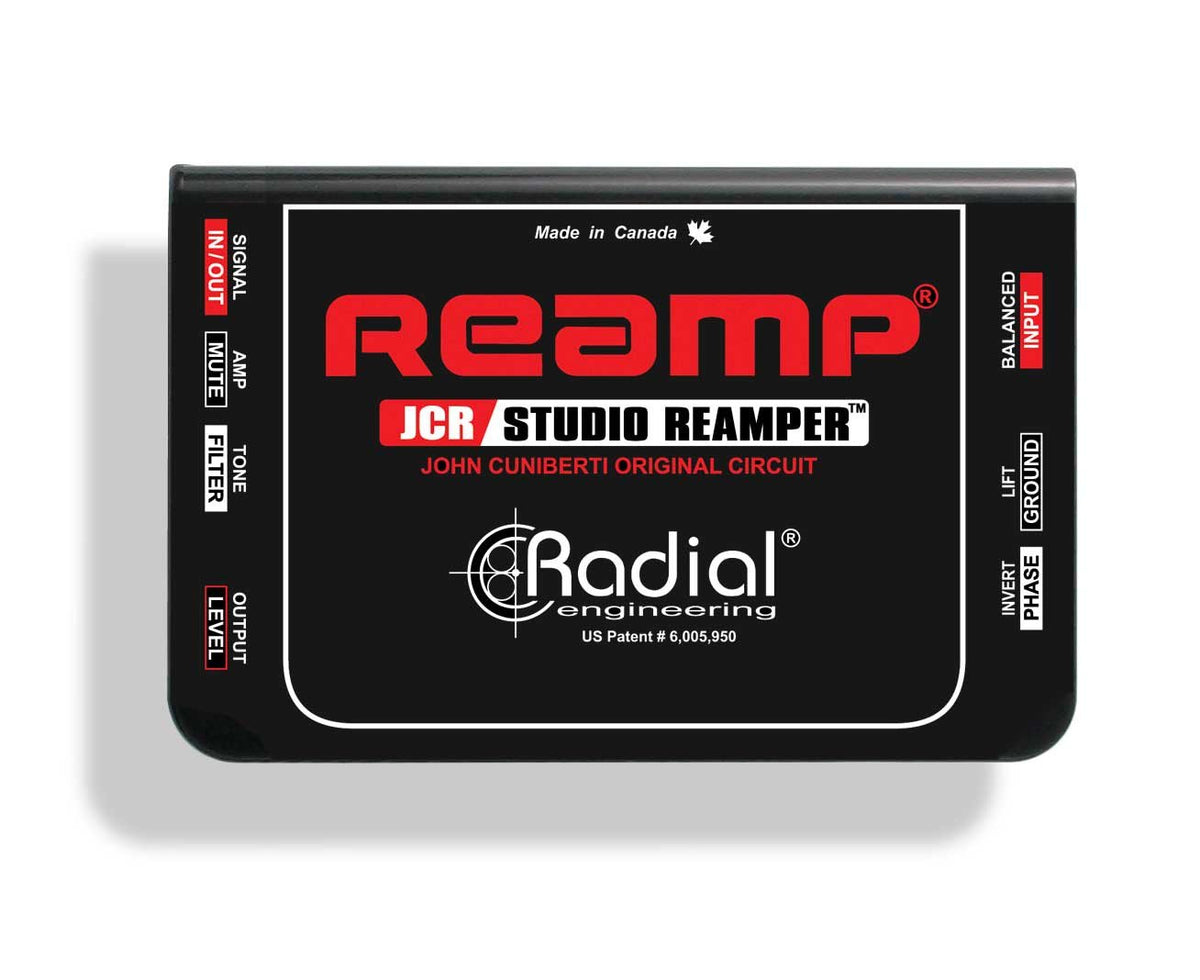
Reamp - A box specifically made to convert an line level signal to something that can be sent to a guitar amp.H-pad + pad means that I use the the H-Pad cable along with the Pad on the Radial JDI direct box.I will be using an H-pad with 4 resistors of 270Ω and a single 47Ω resistor.H-pad - A resistor network built into the cable to reduce the signal level.Reamp with a direct box? What’s the problem?.There’s also another 97.4mb of optional downloads. This post will load up to 105mb of data!!! Let’s find out with some measurements and then real world tests. What IS Reamping? What are these things you do it with? Why do you use them? And can you really do that?
#REAMP BOX VS DI BOX BLUETOOTH#
The most likely application for computerless operation is for the playback of music and instruments, particularly useful considering the Bluetooth connectivity.There’s all sorts of arguments on the internet on whether you can use a Passive DI in reverse as a Reamp, or go straight out of your amp or maybe use a special cable? The MBOX STUDIO can work in a standalone mode where it will pass audio without a host computer connected, meaning that, as well as the already mentioned standalone monitor controller application, it is possible to cascade two units via the ADAT connections allowing two owners to build a larger system with more preamps or using the MBOX STUDIO as a preamp box with a larger system. Two footswitch inputs can also accommodate expression pedals, and unlike many interfaces today, MIDI in and out are provided on old-school 5-pin connectors. Loopback is available, an increasingly mandatory feature in these days of online collaboration, for YouTube and the like. The central hardware button on the MBOX automatically launches MBOX Control.


The User Function buttons are set up from here, and settings can be stored and recalled as presets.
#REAMP BOX VS DI BOX SOFTWARE#
This software also controls the DSP effects, as well as EQ, reverb and delay, are available for monitoring duties the EQ can be printed if desired.
#REAMP BOX VS DI BOX PRO#
Low latency monitoring mode in Pro Tools mutes the output of your record-enabled track allowing direct monitoring and feeding into an integrated DSP mixer, extending the usefulness of this mode. Low latency monitor paths can be set up here. Clicking on any of the hardware outputs displays a separate layer of fader setting for each of the inputs, indicated by a change of colour of the fader caps.

The user interface sets out hardware and software inputs in the top two rows, and the available hardware outputs are arranged on the bottom row. The front panel, as well as presenting two combi XLR connectors for the mic/line/DI inputs and a pair of independent headphone outputs, also houses a Hi-Z output, which shares a path with one of the rear panel FX loop sends, which is designed for re-amping duties.Ī large part of the functionality of the MBOX STUDIO is in the new MBOX Control software, which controls the built-in DSP, including the mixer. Impedances are also addressed in the design of the two built-in effects loops, one of which can be switched to Hi-Z operation, making it suitable for use with guitar pedals. Guitarists are extremely well catered for with two variable Z inputs with an added capacitor option on each of the impedance options, which adds a different, tube-type response when in use.

4 mic preamps are available, the same design as those found in the Pro Tools Carbon, with variable Z for timbre-shifting experiments. For clarity, this DSP isn’t HDX style DSP. Clearly designed to function as a monitor controller and capable of functioning as a standalone monitor controller, the MBOX STUDIO is a USB audio interface with onboard DSP powering a DSP mixer for low latency direct monitoring via the new MBOX Control software and for powering onboard EQ, reverb and delay effects. So the unit itself is a smart, relatively large, wedge-shaped metal enclosure with two large encoders on the top and a plethora of meters and buttons with lots of use of colour. But it is the more unusual connections which suggest that with MBOX STUDIO Avid are targeting new users in exactly the same way as they were with the original back in 2002. The desktop format, lack of bus power and chunky size indicate that this is designed to be a centrepiece for a small studio rather than something designed to be thrown in a bag and used on the move. The choice of connections are revealing in terms of who this new MBOX. With 21 inputs and 22 outputs, this is an interface with connection options, but it’s not just about quantity. MBOX STUDIO Ignition Pack software Bundle included Included 1 year Pro Tools Studio subscription Optical I/O (8-channel ADAT or 2-channel S/PDIF)ġ Hi-Z reamplification output with ground liftĢ headphone outputs with individual cue mixesįour assignable, dual-function, user action buttons 4 mic preamps/line inputs with Variable Z (impedance)


 0 kommentar(er)
0 kommentar(er)
